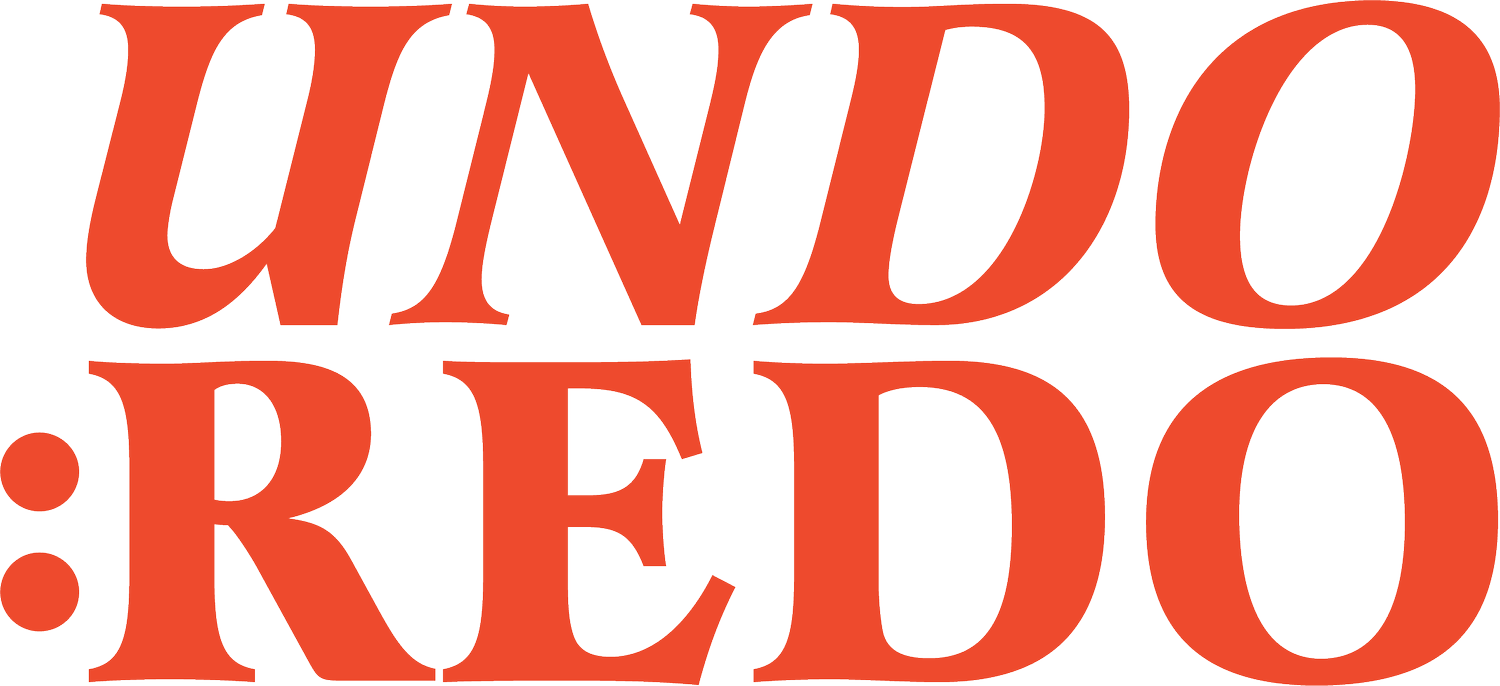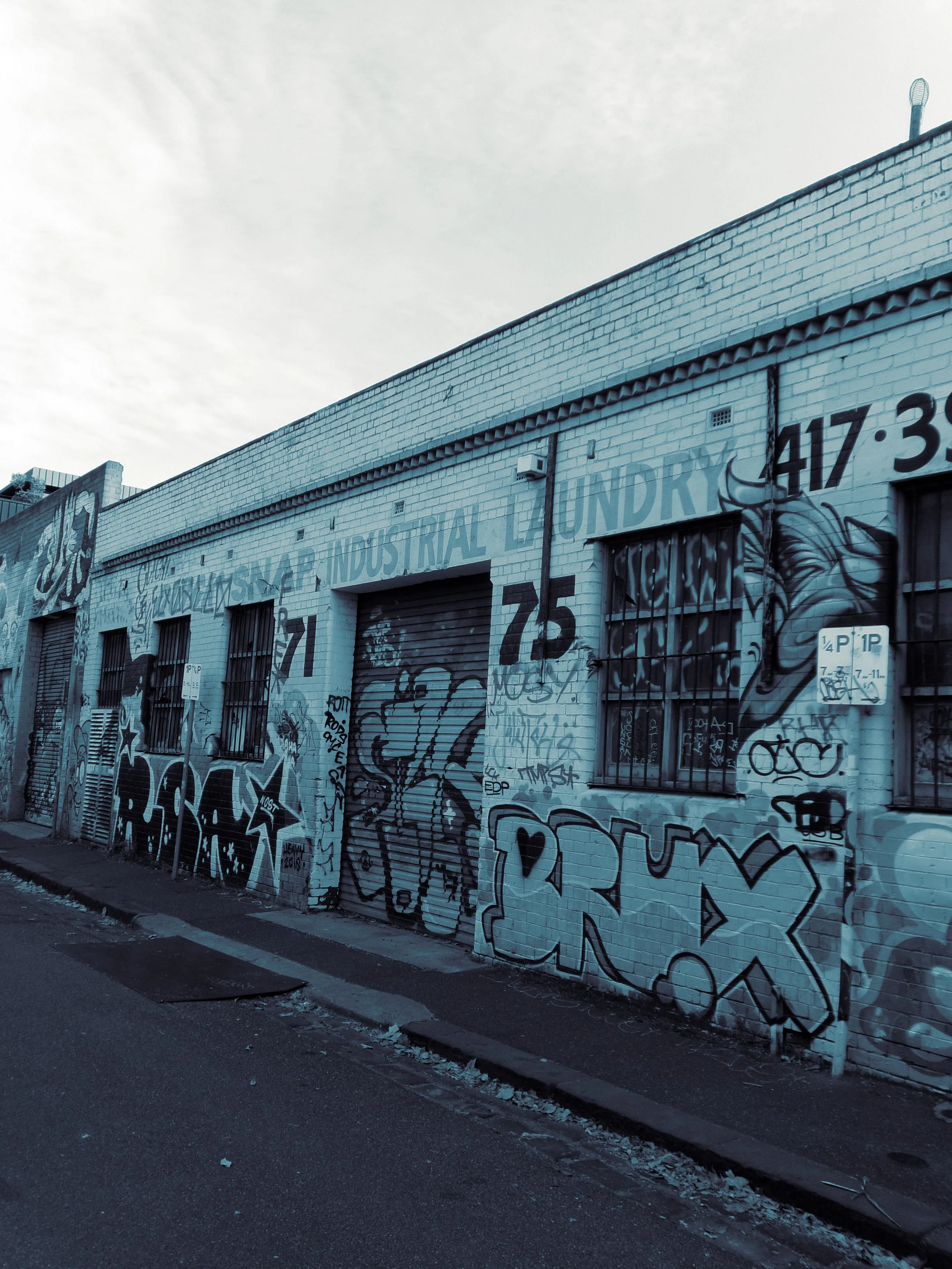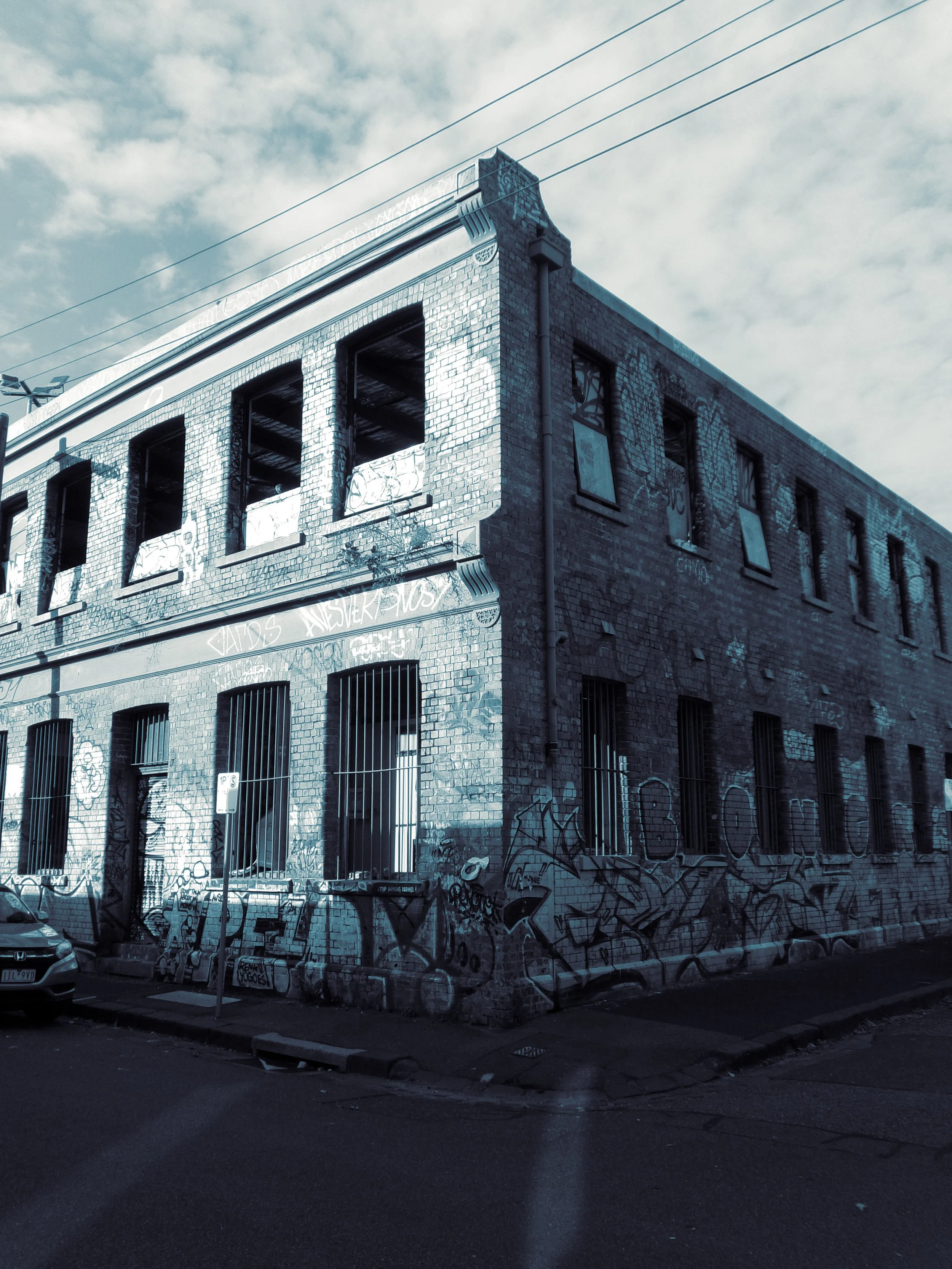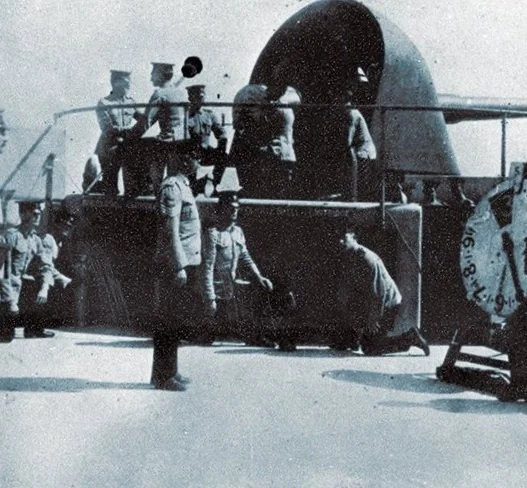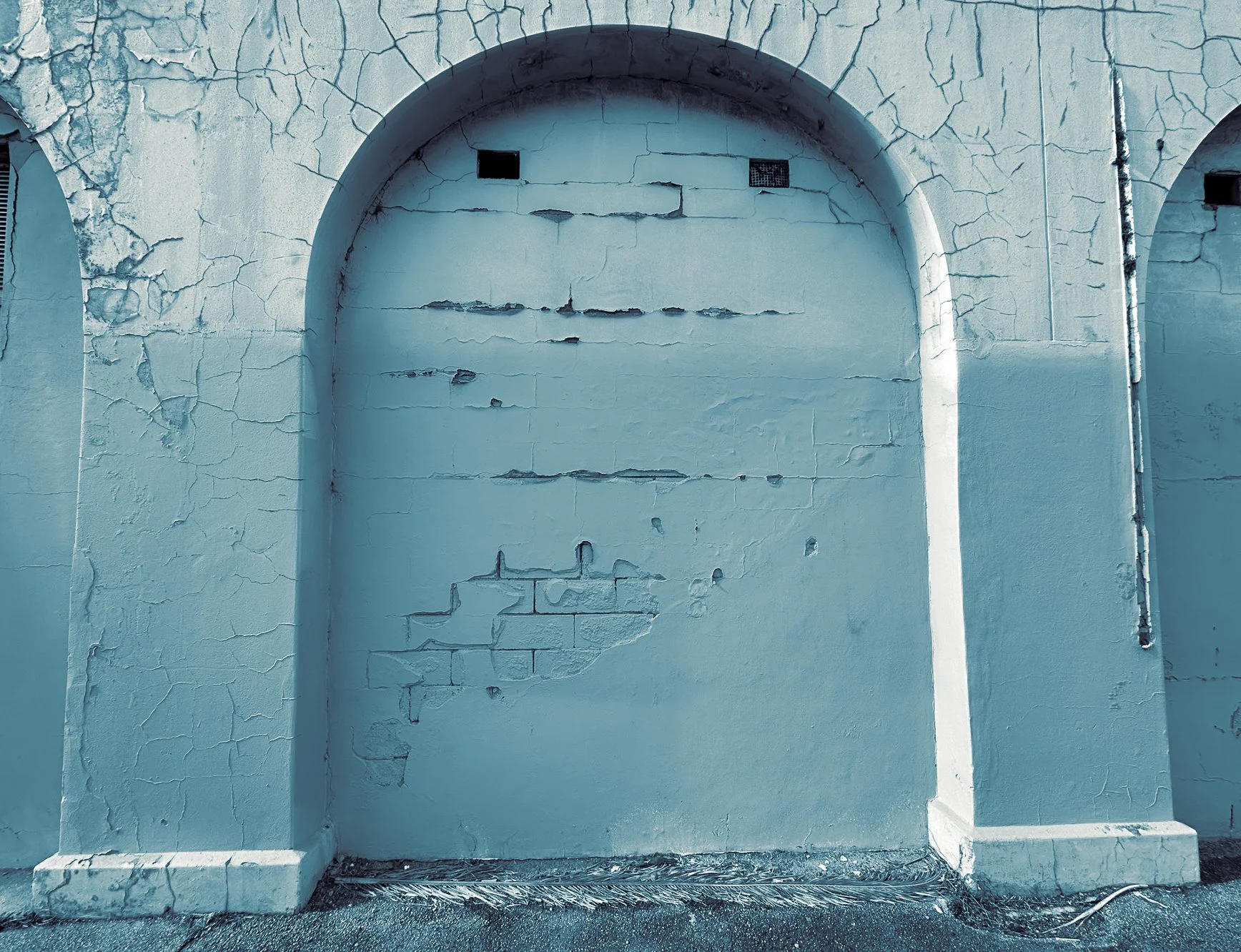
To UNDO approaches site-specific spaces that are uncommon and often under-utilised.
By understanding and untying the sites often deep-rooted history a clear suite of artistic themes are identified.
It is unconventional and through introducing curatorial narratives UNDO highlights the unknown in such a way that destabilises what is known.
ANZ GOTHIC BANK
-
The ANZ Gothic Bank is a symbol of ‘Marvellous Melbourne’, building was completed in 1887 and was the head office the ANZ bank. It has remained a luxury staple of the Gothic Revival style and was designed by architect William Wardell (Elliott, 2024). The bank has stayed true to its roots and is a core example of living history. During the renovations in 2022 Shayne Elliott CEO of ANZ expressed his adoration of the buildings history when a long forgotten deposit box held a gold nugget from the gold rush (Elliot, 2024). ANZ Bank still functions as a bank in Melbourne’s CBD, though it is fully functional and occupied the is space to acknowledge it’s deeply entrenched history through artist exploration.
-
Fools Gold, is a curatorial vision that takes the audience into the grand ANZ Bank, where the hustle of money and the glorious architecture of the building intertwine to create an atmosphere for art intervention. Fools Gold is an exhibition concept that takes a stroll down memory lane, referencing the gold rush as a time where Melbourne was one of the worlds wealthiest cities. It then abruptly changes tone and introduces art from contemporary artists who are focusing on the current cost of living crisis and ongoing financial struggles in 2025. It is a observational exhibition that intends to leave the audience with more questions than answer. Through historical elements, hard truths and unique interpretations of art Fools Gold will come to life in the vaults of the ANZ Gothic Bank.
-
388 Collins St, Melbourne VIC 3000
-
ANZ Gothic Bank
Photograph by Mines Department (1935).
Sourced from the State Library Victoria, (www.slv.vic.gov.au)
POST OFFICE ON RATHDOWNE
-
The Carlton North Post Office is a staple of the suburb and was functioning as a post office over almost a century. It closed its doors in 2022 and has been up for lease since. The land was acquired by the Commonwealth Government in 1911 and the brick building was operating from 1913. The post office has seen many iterations and evolutions to adapt to modern day times and technology. However, it sits vacant and represents a moment in history, frozen in time, for now.
-
Post It! is an interactive art exhibition that takes postcards and encourages the audience to write a message to a loved one. The postcards will be attached to the walls of the Post Office on Rathdowne for the exhibition period before being sent to their address. It is a simple yet effective way to look into communication, in 2025 the world is attached to the digital world and the notion of a postcard is almost obsolete. This re-engages the viewer with their own handwriting, the thought behind a post card and the action of a message taking time to reach the person it is intended for.
-
546 Rathdowne St. Carlton North Victoria 3054
-
Post Office on Rathdowne, Carlton North.
Photograph by Unknown (1917-1930).
Sourced from the State Library Victoria, (www.slv.vic.gov.au)
THE VICTORIA HOTEL
-
The Victoria Coffee Palace, now more well known as The Victoria Hotel has been a staple of Melbourne’s inner-city culture from its establishment in 1888 (Douge, 2023). Located in Little Collins Street the building holds a history of serving tea, coffee and mineral water with the exclusion of alcohol. During the 1920’s and 1930’s its status as a luxury hotel welcomed those travelling to Australia. During World War II the American Army served an extended stay (Douge, 2023), this hotel still functions today featuring historical charisma.
-
Hotel California delves deep the history of America. The Victoria Coffee Palace was home for the American Army during World War II. Through utilising the grand entrance to the current day hotel it is hoped that an exploration of American culture, America at war and the current state of American politics is observed in an expanded context. The curatorial concept is equally serious and satirical, much like the current American narrative, it deeply engages artists to share their own perspective on the downfall of the superpower that America claims to uphold.
-
215 Little Collins St, Melbourne VIC 3000
-
Victoria Hotel , Little Collins Street
Sourced from the City of Melbourne Art and Heritage Collection, https://citycollection.melbourne.vic.gov.au/victoria-hotel-little-collins-street/
SNAP INDUSTRIAL LAUNDRY
-
The Snap Industrial Laundry is a Fitzroy landmark, covered in bold graffiti and text. The laundry closed in 2024 and appears derelict. It is a contemporary landmark, a significant homage to Fitzroy as an industrial precinct which now boasts an arts and cultural atmosphere. Recognised as one of Melbourne’s oldest suburbs, Fitzroy is a space of innovation and entrepreneurship. The Snap Industrial Laundry is an artwork itself, a blank canvas, constantly reworked externally and there is great potential to do so internally.
-
Snap! Industrial! comments on Melbournes north side and delves into its evolution from a factory and industrial precinct to the heart of the arts and cultural scene. Snap! Industrial! places bold, loud and pop art focused art work from local artists who work throughout Fitzroy. It is an exploration of warehouses as exhibition spaces and an ode to the history of the Melbourne working class. The abandoned laundry site will contribute to the aesthetic interventions with a collection of multidimensional works speaking to themes of industrialisation and the movement of warehouses into unique creative hubs.
-
54-64 Leicester Street, Fitzroy
-
Snap Industrial Laundry, Fitzroy
Photograph by Stella Wadeson (2025).
FITZROY WAREHOUSE
-
Admittedly this Fitzroy warehouse is a staple of many unknown buildings scattered throughout Melbournes inner north. It is partly a car park, partly a shell of the building prior and if you look closely through the open windows, the roof is covered in the colourful street art Melbourne is worldly recognised for.
-
There is not much intervention that needs to necessarily occur in this derelict space, the art speaks for itself. Bold tags, spray paint covering layers of design, art and at times terrible excuses for art. This Fitzroy warehouse represents walls that can be a contemporary Sistine Chapel, an open call for street artists to collaborate with one another on a largely blank canvas.
-
Leicester Street, Fitzroy
-
Fitzroy Warehouse
Photograph by Stella Wadeson (2025).
FORT NEPEAN BARRACKS AND TUNNELS
-
Fort Nepean is one of the fortifications that protected Melbourne during World War I and II (Parks Victoria, n.d.). Fort Nepean is located at the tip of the Mornington Peninsula and represents an era of Australia at war. The location features tunnels which run underneath the point, connecting to defence barracks and gun emplacements. The arched red brick tunnels are vast corridors and often seem endless. Fort Nepean is surrounded by the natural world, with expansive costal scenery, it is situated on the land of the Boonwurrung people of the Kulin Nations.
-
Tunnels of Vision situated at in the tunnels of Fort Nepean reintroduces the site as a place for self expression for migrant communities. Fort Nepean is historically a site of colonisation, war and suffering situated overlooking the vast Victorian coastline. The curatorial intention for Tunnels of Vision is to introduce works from Australian migrant artists. This juxtaposition breathes life into communities who have sought refuge from their own countries. It is a space to introduce the diversity of culture and envision in a historical place of transit how a contemporary art outcome can unite community.
-
POINT NEPEAN NATIONAL PARK
Defence Rd, Portsea VIC 3944
-
Fort Nepean Barracks
Sourced from the Nepean Historical Society Collection, https://nepeanhistoricalsociety.asn.au/
TV ANTENNA SALES SHOP
-
The TV Antenna Shop in Richmond is an abandoned building on the corner of the carpark behind Richmonds Bridge Street. The TV Antenna Shop admittedly does not hold the same historical significance of many buildings, however it is a contemporary representation of digital evolution. The exact location of the corner building is between Mcgoun St and Hull St.
-
Bent Antenna, envisions the derelict TV Antenna Sales Shop to become a digital extravaganza of screens, bright lights, digital art and a representation of the digital age we are currently living in as a society. Bent Antenna takes the idea of the TV Antenna which is somewhere evolving due to the interest in free to air versus streamed television changing significantly from the early 2000’s. Entering into interior of the building the viewer is transported into a world of television and film history, as if walking through a carefully curated TV store. It is an endeavour to take a space that no longer has purpose and introduce an activation.
-
Hull Street, Richmond
-
TV Antenna Sales Shop,
Photograph by Stella Wadeson (2025).
ST KILDA VAULTS
-
The St Kilda Vaults are a historic monument deeply connected to Australia’s colonial history. During the 1890’s the development of the Esplanade public transport system and introduction of tramways also allowed for the addition of the St Kilda Vaults, which were implemented as storefronts facing Port Philip Bay (City of Port Philip, n.a.). The vaults were closed in the 1950’s due to the widening of St Kilda Road and became bricked up in the 1970’s. The vaults represent Australia’s colonial history as they are situated on the land of the Boonwurrung people of the Kulin Nations, specifically the Yalukit William clan.
-
Sunburnt Country looks to take a snapshot of contemporary Australian culture. Through culminating a diverse range of artists and artworks, the exhibition seeks to redefine the national identity of Australia in a modern context. The curatorial vision aims to shine light on representation, reconciliation and recognition. Core to the theme are three categories which thematic works are placed into. Firstly, the capturing of ‘quintessential Australia’ and understanding what that means in an openminded and considerate perspective. Secondly, the nature and land Australians inhabit and how it is intrinsically linked to the First Nations people and their own livelihood. Thirdly and arguably most importantly, this leads into understanding what identity is and seeking to discuss decolonisation, recognising historical influence as part of contemporary Australia.
-
Jacka Blvd, St Kilda VIC 3182
-
Fitzroy Warehouse
Photograph by Stella Wadeson (2025).
WINE BANK BENDIGO
-
The Wine Bank Bendigo was initially known as the Union Bank and is deeply connected to the gold rush history of Victorian regional towns. The classical style was built by architects Smith and Johnson, it also included a smelting house for processing gold. The bank was more than a place for exchange of money, it was part of a unique banking era where is was a gold safe, smelting house and residence (Heritage Council, n.d.). The Union Bank has been converted into the Wine Bank on Bendigo’s main View Street.
-
Smelt is an exhibition concept that imposes on the Wine Bank in Bendigo is a bustling restaurant in the heart of the regional towns main street. The exhibition concept for this is utilise the first room on the right of the bank for the installation of a collaborative artwork. Originally the bank was also a smelting house, instead of focusing on the smelting of gold the large scale artwork installation will be made of plastic. It will be melted together to create a mass that fills the space, suffocating it. Smelt will take a historical practise and align it to how we utilise the melting of materials now, a comment on climate change and how materials have evolved.
-
45 View St, Bendigo VIC 3550
-
The Union Bank, Bendigo
Photograph by Colin Caldwell (1949).
Sourced from the State Library Victoria, (www.slv.vic.gov.au)
MELBOURNE SAVAGE CLUB
-
The Melbourne Savage Club was formed in 1923 still exists as a private, exclusive gentlemen’s club in Bank Place (Melbourne Savage Club, n.d.). The building itself was built in 1894 and is celebrated for its symmetrical architectural design and the home of Sir Rupert Clarke. However, over the past century has been remodelled to make space for the growth of Melbourne. The Melbourne Savage Club hosts artistic events, concerts, art prizes for exclusively gentleman. The club only welcomes women from 4.30pm on weekdays and represents a modern day ode to the traditional gentleman’s clubs that were often full of debauchery.Laundry is an artwork itself, a blank canvas, constantly reworked externally and there is great potential to do so internally.
-
Woman Are Welcome Now. Is a bold comment on societal expectations for women referencing the history of feminism in a space that directly excludes women from the premises. The exhibition theoretically takes place in the Melbourne Savage Clubs main dining area where the walls are turned into a political display of messaging about women’s rights. That is of course within the realm that the Melbourne Savage Club would allow such progressive thinking. It is an ode to Kirsha Kaechele’s Ladies Lounge at the Museum of Old and New Art, an extension of the lavish space solely for women.
-
12 Bank Pl, Melbourne VIC 3000
-
Melbourne Savage Club
Photograph by Colin Caldwell (1949).
Sourced from the State Library Victoria, (www.slv.vic.gov.au)
